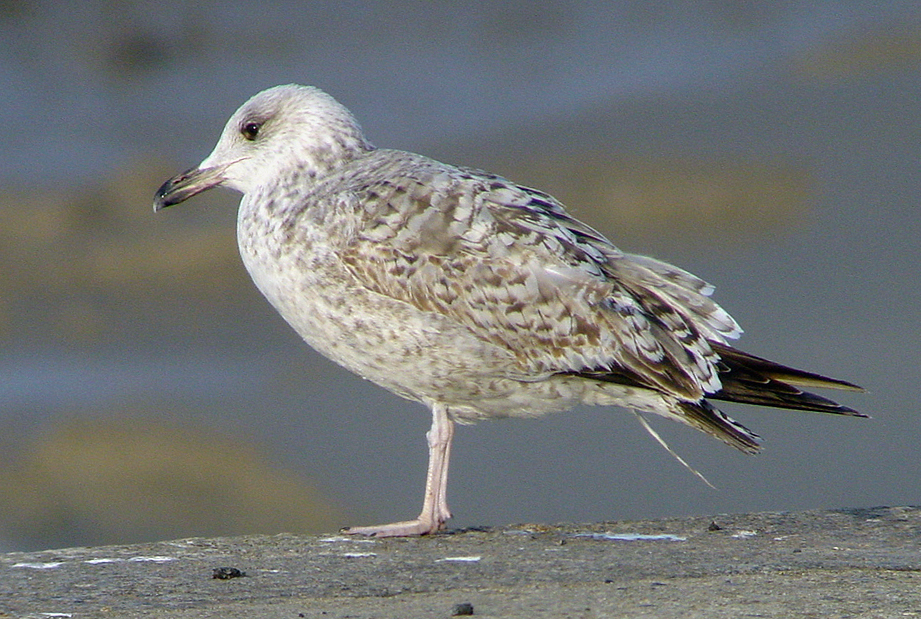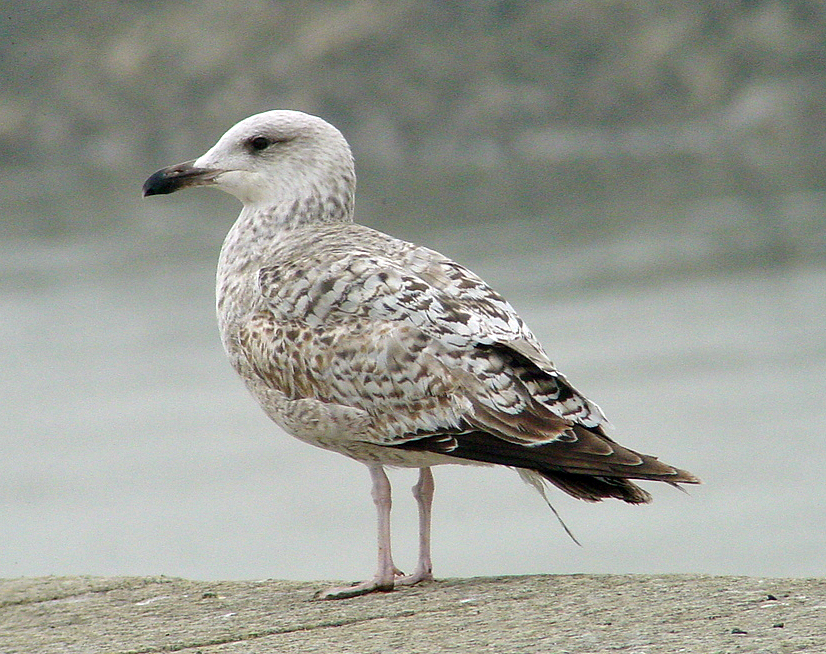 Yellow-legged
Gull - Larus michahellis
Yellow-legged
Gull - Larus michahellis
(last update: October 08 2013)
Coordinators:
Delfín González
Gabriel Martín
Antonio Gutierrez
Amir Ben Dov
Mars Muusse
Yellow-legged Gull michahellis 2CY, mid-March 2003, Etaples/ Boulogne-sur-Mer, France (50.42N,01.34E).
2CY michahellis, which has
replaced the head, neck, breast, belly and flanks to second generation in
the first pre-basic moult (post-juvenile moult). The vent is still juvenile.
This moult also included some wing-coverts and tertials: In
the left wing, the upper tertials #1-3, inner greater coverts #1-4, inner
and central median coverts, inner and central lower lesser coverts and about
eight lesser coverts have been replaced for second
generation feathers. By March, the exact sequence is very hard to detect
as the juvenile wing-coverts are very abraded and bleached and the second
generation wing-coverts required in an early stage (July-August) are very
hard to separate from old juvenile feathers. The last moulted feathers (e.g. central median and
lower lesser coverts) show broad white tips and grey bases. The tail-feathers and flight-feathers are still
juvenile, except one rectrices on the right-hand side.
Since the tail is closely folded, it seems to be predominantly dark, but
this only applies to the central rectrices.
Fresh scapulars with a broad pale tip can be found in the rear lower scapulars.
Its difficult to tell exactly how many upper scapulars have been replaced
recently for third generation feathers. In 2CY michahellis it's common to find birds
starting to replace upper scapulars to third generation feathers, while
the rear lowest scapulars have only very recently been replaced for second
generation feathers. By this stage, this individual shows first generation
feathers (remiges, rectrices, most outer wing-coverts), second generation
feathers (the head, body, most scapulars and some inner wing-coverts) and at the
same time third generation feathers (a few lower upper scapulars).
Note that in most 2CY individuals of this age-class the head and neck are by no way pure white, with
delicate dark streaking
concentrated around the eye and extending on the nape. In the hind-neck,
2CY michahellis often shows a boldly streaked neck-collar. The
dark bill starts to turn paler at the base by February.

March 16 2003

March 17 2003

March 18 2003